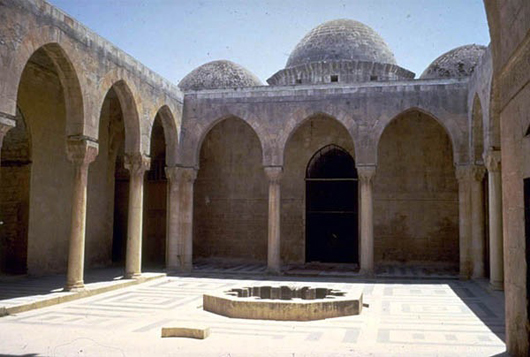Ayyubid dynasty has its origins in the help request made by the last Fatimid sultan, Al Adid, to Nur-al-Din, Sultan of Syria, to raise the Siege of Cairo in the context of Third Crusade. Nur-al-Din sent General Saladin who finally proclaimed Sultan after Al Adid's death. Later, after Nur-al-Din's death, Saladin also proclaimed Sultan of Syria and will shake the states created by Christians in the first crusades.
Greatest extent of the Ayyubid Empire under Saladin in 1188
Ayyubids were important architecture patrons. They established religious institutions (madrasas, khanqa) for spreading Sunni Islam (as Egypt had been Shiite during Fatimid dinasty) as well as mausoleums and social welfare establishments, and imposing fortifications resulting from military conflict with Crusaders. Aleppo Citadel in Syria is a remarkable example of their military architecture.
Al-Firdaws Madrasa, Aleppo, Syria (1235-36). Floor plan.
Citadel of Aleppo, Syria (12th century). Aerial View.
Citadel of Aleppo, Syria (12th century). General view.
Lecture taught at Notre Dame School of Architecture in South Bend, Indiana (USA), January 26, 2011.
Author: Pablo Álvarez Funes





No hay comentarios:
Publicar un comentario
Si desea hacer un comentario que no tenga que ver estrictamente con la entrada en la que comenta, le ruego me escriba a pfunes1981@gmail.com o use el minichat.
Muchas gracias por su aportación.
No se publicarán comentarios solicitando intercambio de enlaces o sugiriendo visitas a otros blogs de temática no relacionada con este.